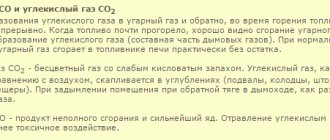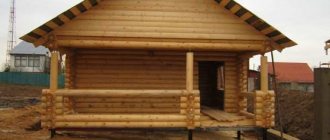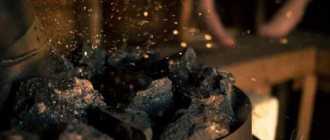Of the variety of potent toxic substances, carbon monoxide or carbon monoxide occupies a special place. After all, it is an invariable companion of the oxidation process, simply banal combustion of fuel. And how many heating devices are there in everyday life: fireplaces, stoves. The source of fumes can be cars and other units equipped with an internal combustion engine. The bathhouse, or rather its stove, is no exception. Being a complex element of the entire bath system, it requires constant attention and preventive maintenance. In fact, an electric heater can provide a full guarantee of the absence of carbon monoxide as a combustion product. It is no coincidence that the Scandinavians and Finns, at one time, began to switch en masse to electric heaters in small-sized baths. In general, the problem is serious and should not be neglected. If a visitor gets sick in a bathhouse, what should he do? The main thing is not to panic. And then, we read.
How does carbon monoxide affect the human body?
Carbon monoxide has the ability to bind hemoglobin molecules, thereby preventing the blood from carrying oxygen.
The longer a person breathes toxic air that contains carbon monoxide, the faster the pathological process develops. The substance carboxyhemoglobin is formed in the blood. The cells of the body do not receive life-giving oxygen, a headache appears, the person begins to experience suffocation, and the consciousness is confused. It takes quite a long time for hemoglobin to be completely cleared of carbon monoxide. The danger to life is directly related to the increase in CO concentration in the air and the concentration of carboxyhemoglobin in the blood. If the accumulation of carbon monoxide in the air is only 0.02-0.03%, then after 5-6 hours the content of carboxyhemoglobin in human blood will be 25-30%.
Rescue actions in case of carbon monoxide poisoning must be very fast, because if the CO concentration reaches only 0.5%, carboxyhemoglobin will increase to lethal values within 20-30 minutes.
Diagnostics
If carbon monoxide is not recognized as the cause of symptoms, the problem may be misdiagnosed upon arrival at the emergency room.
Therefore, it is important to notify the emergency physician of your suspicions if you think CO is involved.
Making a diagnosis is relatively simple. It involves a noninvasive test with a device called a CO-oximeter, which is placed on a finger, toe, or other part of the body. The oximeter contains two diodes that emit light rays of different wavelengths. The amount of light absorbed by the tissue can tell doctors how much carboxyhemoglobin (a compound created by the bonding agent CO and hemoglobin) is in the blood.
Under normal circumstances, you would have less than 5 percent carboxyhemoglobin compared to free hemoglobin. Poisoning occurs if the level is between 10 and 30 percent. Death can occur at levels greater than 30 percent.
Regular pulse oximeters are useless because they cannot distinguish between carboxyhemoglobin and oxyhemoglobin (the compound formed when oxygen and hemoglobin bind).
The main reasons for the accumulation of toxic substances
Symptoms
To properly provide assistance for carbon dioxide poisoning, you need to know the characteristic symptoms.
Clear signs of mild carbon monoxide poisoning:
- migraine;
- tapping in the temporal area of the head;
- choking cough;
- severe dizziness;
- bouts of vomiting;
- nausea;
- tearfulness;
- severe pain in the chest area;
- hallucinations, both visual and auditory;
- purple color of the scalp;
- hypertension;
- tachycardia.
The following symptoms indicate a moderate degree of intoxication:
- weakness;
- drowsiness;
- noise in ears;
- muscle paralysis.
The following signs indicate acute poisoning:
- fainting;
- uncontrolled urination and defecation;
- breathing problems;
- convulsions;
- cyanosis of the skin and mucous membranes;
- dilated pupils with poor reaction to light sources;
- coma.
Failure to provide assistance in a timely manner may result in death.
Carbon monoxide intoxication, alas, leaves behind a significant trace. In case of mild to moderate CO poisoning, a person may be bothered by:
- acute continuous headache;
- frequent dizziness;
- nervous disorders;
- memory loss;
- stop in development.
In acute poisoning, the following are often observed:
- circulatory disorders in the brain;
- polyneuritis;
- heart attack;
- cerebral edema;
- deterioration of hearing and vision (complete loss is possible);
- subarachnoid hemorrhage;
- severe pneumonia (with long-term coma).
Complications are unpredictable and often, unfortunately, lead to death.
At-risk groups
People who are particularly sensitive to carbon monoxide are:
- excessive consumption of alcoholic beverages;
- passionate about tobacco products;
- asthma sufferers;
- exhausted by nervous or physical stress.
In addition, pregnant women and children are at risk. Be carefull.
Causes
Poisoning often occurs due to:
- faulty heating appliances used in bathhouses, houses, garages and apartments;
- violations of safety precautions for using a particular heating device;
- long stays in rooms that are not ventilated;
- presence of combustion products in the smoldering area;
- lack of good exhaust.
Besides these reasons, there are others, but these are the most common.
Bathing procedures in the steam room are famous for their usefulness for all ages and are used even for colds. But there is also a dangerous side to folk tradition.
Often, due to haste and the desire to preserve heat, bathhouse attendants are in a hurry to close the chimney by closing the damper. Unextinguished coals continue to burn out barely noticeably, and carbon dioxide, being a product of this process, enters the room without signaling the danger either by color or smell. This situation develops due to the location of the furnace part of the stove in the steam room.
In the absence of ventilation or its insufficient power, the situation is aggravated and smoke increases.
You can get burned not only from the stove; according to the same principle, poisoning occurs in the smoke of a fire, from improper use of household gas, and some drivers have the misfortune of getting burned in the garage.
Carbon monoxide is extremely toxic if it enters the human body. It is much heavier than air and has neither color nor odor. That is why a person does not even feel at what point a poisonous gas begins to enter the body, which, combining with hemoglobin in the blood, prevents the flow of oxygen. What is the cause of carbon monoxide accumulation?
The fact is that in a traditional Russian bath there must be a wood-burning stove, which is most often installed directly in the steam room. But when handling it, like any other heating device, you need to be extremely careful and adhere to the basic rules of operation.
What can be the main reasons for the release of carbon monoxide?
| Factors | Actions |
| Closed exhaust damper. | Many people make the big mistake of trying to keep the stove hot and the steam room warm by closing the damper early. As a result, carbon monoxide cannot escape through the chimney and begins to enter the room. Thus, the poisoning of the people who are in it occurs. |
| Premature closing of the oven. | If the stove has not yet been sufficiently heated and has not warmed up the room, it should not be closed. |
| Untimely or poor-quality chimney cleaning. | Clean the pipe regularly to prevent gas from entering the steam room. |
| Improperly equipped ventilation system. | It is necessary to pay increased attention to it during the construction stage. |
It is absolutely forbidden to ignore safety rules. Most often, a person in a bathhouse receives mild degrees of carbon monoxide poisoning. But still the consequences can be very dire, even fatal.
Why close the damper?
There are two types of stove chimney damper: gate valve and view valve.
- It is more convenient to regulate the air draft using a slide valve. Disadvantage: it burns; if not used for a long time, it can jam.
- Disadvantages of the view - it is difficult to regulate the traction, your hands get dirty with soot.
The valve must be closed after the stove has finished firing. The exact timing depends on the fuel used. When using firewood, the view is closed after the coals have darkened, when their surface is covered with ash. There should be no bluish flames. At this time, you can close the damper halfway and open the blower completely. When the coals are almost out, they will break easily, close completely.
When using oak or ash firewood, you need to wait until the coals have completely died out. If you heat with peat, coal or briquettes, there should not be a single smoldering coal left. Waiting for complete burnout leads to faster cooling of the heating device.
To reduce waiting time and retain more heat, you can completely remove the ash and remaining coals from the stove. It is recommended not to close the valve completely to ensure safety. At the same time, you need to close the ash door.
Closing the damper in the furnace in the house is necessary to preserve heat and regulate draft. It is installed in the upper part of the stove, under the ceiling, at the beginning of the chimney pipe. If you leave it open, the oven will cool down quickly.
When the damper is open, ventilation occurs inside the stove: cold air from the house enters the inside of the stove through the blower, warm air comes out through the pipe. Accordingly, the bricks cool quickly.
This does not happen when the damper is closed. On the contrary, the walls of the stove heat up more strongly; it can hold heat for up to two days, providing a comfortable temperature in the house. Allows you to use the stove more efficiently and save on fuel.
The timing of the valve closing is very important. If you close it too late, the stove will cool down and the fuel will “fly out the drain.” If you do this early, carbon monoxide generated during fuel combustion will enter the premises of the house. This can lead to severe poisoning of those living in the house.
First aid if you get burned in the bathhouse
A person, while in a bathhouse, cannot notice the flow of carbon monoxide into the room. And even signs of intoxication do not appear immediately. It is especially difficult to recognize the problem if the person drank alcohol before the steam room.
The main symptoms that indicate carbon monoxide poisoning are:
- dizziness;
- nausea;
- bitter taste in the mouth;
- headache;
- general weakness;
- vomit;
- dyspnea;
- loss of orientation;
- noise in ears;
- disturbance of visual perception.
And, besides this, experienced bathhouse attendants do not recommend being in the steam room yourself. After all, a person alone may not notice that he is receiving quite severe poisoning of the body. And there will be no one to help him.
In Russian baths with a non-electric stove there is always a chance of getting burned. Therefore, there should be no rush during bath procedures. All safety rules must be strictly followed. Be sure to listen to yourself and your feelings in the steam room to avoid trouble. If you feel that you are starting to feel dizzy and have a headache or that you are starting to feel sick in the bathhouse, you need to immediately leave the room for fresh air without waiting for your condition to worsen. You may have inhaled carbon monoxide and that is why you feel unwell.
Experts recommend warm tea or simply drinking plenty of fluids after leaving the room. But all this applies to mild degrees of poisoning. What to do if a person becomes very ill? The first step is to help the victim by taking him outside. If the person is unconscious, call an ambulance immediately.
What to do if ammonia does not help bring the victim to his senses? You need to do artificial respiration and wait for the ambulance. And be sure to remember that if a person does not regain consciousness, you need to put him on his side so that the tongue does not sink in and the person does not suffocate.
The toxic effects of CO on the body can be manifested by the following symptoms:
- When a person is mildly poisoned by carbon monoxide, he may feel weakness, tinnitus, headache, nausea, and the urge to vomit. These signals are evidence of oxygen starvation that the brain experiences.
- In case of moderate poisoning, the symptoms of intoxication increase. Tremors in the muscles, short-term memory loss, and loss of coordination of movements appear. A person may cease to distinguish colors, objects begin to appear in two in the eyes. Later, respiratory function and the functioning of the circulatory system are disrupted. The victim develops tachycardia and cardiac arrhythmia. If a person does not receive quick help at this stage, then loss of consciousness and subsequent death occurs.
- Severe CO poisoning is accompanied by irreversible damage to brain cells. The victim may fall into a comatose state and remain there for a week or more. At this time, the patient experiences severe convulsive seizures, uncontrolled urination and defecation. Breathing is usually shallow and intermittent, body temperature rises to 38-39 degrees. Respiratory paralysis and death may occur. The survival prognosis depends on the depth and duration of the coma.
It is important to act very quickly, remembering that the countdown is not just minutes, but even seconds. What should you do first in case of carbon monoxide poisoning? The sequence of actions should be as follows:
- Quickly open all windows and doors and carry the person out of the room.
- Call a specialized ambulance team. When making a call, you need to describe the problem as clearly as possible to the operator receiving the call, so that doctors with the necessary equipment are sent to the victim.
- If a person loses consciousness due to carbon monoxide poisoning, it is necessary to lay him on his side. Next, bring a cotton wool soaked in ammonia to his nose (at a distance of 2 cm from the nostrils) and gently wave it. Remember that if you bring ammonia too close, the powerful effects of ammonia can lead to paralysis of the respiratory center.
- If a person is not breathing, then artificial respiration must be started immediately. If the victim has not only lost consciousness, but also has no signs of cardiac activity, then artificial respiration should be supplemented with chest compressions. Such first aid for carbon monoxide poisoning should be done until the arrival of a medical team or until the person begins to actively show signs of life.
- If the poisoned person is conscious, he must be laid down and try to ensure the maximum flow of fresh air. For this purpose, you can fan it with newspaper, turn on the air conditioner and fan. You should put a warm heating pad or mustard plasters at your feet. Alkaline drinking (for 1 liter of warm water - 1 tablespoon of soda) can bring considerable benefit to the victim.
We found out what to do in case of carbon monoxide poisoning and how to provide first aid. Now let's talk about another very important point: it is important for people involved in providing assistance to protect themselves. When removing a person from a poisoned room, you need to cover your airways with gauze or a handkerchief.
The pathological effect of carbon monoxide is the formation of a strong compound - carboxyhemoglobin. The function of transporting oxygen through tissues is completely lost by damaged proteins, resulting in acute oxygen starvation.
The brain, heart and lungs suffer the most from lack of oxygen. The first symptoms of fumes in the bathhouse are dizziness, headache, tinnitus, a feeling of pulsation in the temples, nausea, a feeling of “cottoniness” in the legs, lack of air. At this stage, it is often enough to simply go out into the fresh air.
Many steam room lovers attribute this condition to the classic “overheated in the bathhouse.” Such arrogance is especially dangerous if a person is soaring alone. It is important not to miss the first stage and be saved in time.
Further, progressively, weakness, shortness of breath, nausea, vomiting, deterioration of vision and hearing occur. The skin and visible mucous membranes acquire a red tint.
Signs of severe intoxication in the bathhouse are confusion, fainting, rapid and shallow breathing, dilated pupils, pale appearance. Emergency medical attention is required. Possible death.
First aid for smoke inhalation in a bathhouse - the victim, depending on his condition and degree of poisoning, must be taken out or taken out into fresh air.
If the injury is mild, the person who has “steamed” in the bath should be given strong coffee or tea to drink in order to tone the nervous system and increase blood pressure.
For moderate damage, inhale ammonia to maintain consciousness and stimulate blood flow to the head. Mustard plasters placed on the chest and back between the shoulder blades will have a good effect in improving blood circulation.
A seriously injured person should be placed on his back, carefully turn his head to the side, unfasten the collar of his outerwear, if any, and call an ambulance.
Under no circumstances should a person who has lost their temper be left alone. While waiting for doctors to arrive, you should regularly check for a pulse in the carotid artery located in the neck and breathing by putting your ear to the victim’s chest or holding a pocket mirror to his lips.
If any life-supporting parameter ceases to manifest itself, it is necessary to begin urgent resuscitation measures. Indirect cardiac massage should be performed and artificial respiration should be given to the poisoned person. This is done according to the formula: 30 intense compressions on the sternum for 2 breaths.
If the victim is a child, then the likelihood of negative consequences is much higher, since intoxication develops faster due to low weight and imperfect respiratory and circulatory systems.
In cases of poisoning, you should not rely on self-medication. Immediately after, and sometimes even before, providing first aid, you must immediately call an ambulance.
The medical team will give the patient a mask with a supply of pure oxygen and administer the antidote – Acizol. The drug destroys the connection between carbon dioxide and hemoglobin, reducing the harmful effects of hypoxia on body tissue. The sooner it is administered, the less damage to vital organs. This is the fastest way to cleanse the body of toxic compounds.
In the hospital, ventilation with pure oxygen and symptomatic therapy will continue. At first, such a patient will be bothered by arrhythmias and arterial hypotension.
Symptoms
So what should you do if you have carbon monoxide poisoning? To save a life you should:
- call an ambulance immediately;
- keep calm and act consistently, quickly and clearly (although this is difficult for many);
- put on a gas mask or make a mask from improvised materials;
- evacuate a person to the street;
- remove clothing that restricts breathing;
- in case of mild poisoning, give the injured person strong tea, cover with a warm blanket, and ensure a calm environment;
- in case of moderate severity, place the person on a flat surface and turn him on his side. Soak a cotton swab in ammonia and let it smell at a distance of 2 cm;
- in case of acute poisoning, perform cardiac massage and perform artificial respiration.
There is no need to do anything else at home until the doctors arrive. Further treatment of the patient depends on his condition.
Prevention
A little bit of theory
1. Use only working equipment
2. Make sure there is good ventilation
If you use a gas stove for heating, carbon monoxide poisoning is quite possible.
3. Do not close the stove damper until the coals have burned out
4. Car enthusiasts, do not start the engine in the garage for heating.
- dizziness, headache
- nausea, vomiting
- noise in ears
- shortness of breath, cough
- teary eyes.
Headache and dizziness are the most common symptoms of carbon monoxide poisoning.
If you have carbon monoxide poisoning, call an ambulance
- If chills begin or the temperature drops, wrap them up warmly and give them sweet tea (if the person is conscious, of course).
- Make yourself comfortable (and preferably in the fresh air or at least near an open window) to make breathing easier.
- Calm down if scared or agitated.
- Lay the unconscious person on his side and make sure that his head does not fall back, especially if vomiting suddenly occurs.
If breathing stops, artificial respiration should be done, and if the heart stops, indirect cardiac massage. BUT! These manipulations make sense only if you know how to perform them - otherwise there is a risk of causing even greater harm (although in general, it is reasonable for everyone who often travels outside the city to learn first aid skills - at the dacha, on a hike, fishing).
You can avoid the problem by following simple recommendations:
Quit smoking. In case of fire, immediately leave the premises and use protective equipment - respirators
Exercise caution when starting a fire. Replace gas stove pipelines in a timely manner
Do not forget to open the view when heating with a stove, or when visiting a bathhouse. Do not allow children to play with matches and lighters.
Practitioner. She graduated with honors from Vitebsk State Medical University in 2012 with a degree in general medicine. She was awarded a certificate of honor for her achievements in her work.
- Full recovery with possible temporary hearing loss.
- Recovery with persistent disturbances in the central nervous system
- Death due to heart and brain damage from lack of oxygen.
When can CO poisoning occur?
With normal ventilation and a well-functioning exhaust hood, carbon monoxide is quickly removed from the room without causing any harm to the people there. However, according to statistics, more than one and a half million people die from carbon monoxide poisoning in the world every year. In some cases, this happens for reasons beyond a person’s control, for example, during a fire. Usually, people caught in a fire lose consciousness, inhaling the deadly gas, and cannot get out of the fire trap themselves.
CO poisoning is also possible in the following cases and circumstances:
- In rooms with stove or fireplace heating (residential buildings, bathhouses, etc.) in case of untimely closing of the exhaust dampers or poor exhaust.
- In rooms where gas appliances operate (water-flowing heaters, stoves, gas boilers, heat generators with an open combustion chamber); if there is insufficient air flow necessary for gas combustion, as well as if the draft in the chimney is impaired.
- In production workshops where CO is used as a working substance for the synthesis of certain organic substances (phenol, methyl alcohol, acetone, etc.).
- If you spend a long time next to a busy highway or directly on it (on most large highways, CO levels in the air can exceed the permissible standards several times).
- In garages, with the car engine running and no ventilation.
What determines the concentration of burning odor?
Before solving a problem, it is necessary to correctly assess its severity. To do this, the following factors should be taken into account:
- Volume of fire. In a large fire, a large amount of materials is burned, which means there will be more burning and smoke in the room;
- Room area. The concentration of smoke will directly depend on the size of the room. In small apartments its value will be maximum, which means the smell will be more persistent and pungent;
- Duration of the fire. The smell will be stronger if the living area has been exposed to smoke for a long time. In this case, all porous materials will be saturated with combustion products and it will be more difficult to remove the unpleasant aroma;
- Material of burnt objects. Any material leaves different odors after combustion. When organic substances are burned, carcinogens are released, which pose a real threat to human health and the environment;
- Temperature of combustion . If the fire occurred in a low temperature range, the result will be the fattest soot with a strong and persistent odor.
To completely eliminate the negative factor, it is necessary to carefully analyze the burned materials that caused the burning smell and only then select methods of influence.
Only complete removal of the source, which is soot, will permanently remove the smell of burning from the house.
Consequences
The results of carbon monoxide poisoning in a bathhouse depend on the dose of the toxic substance received and are divided into early - within a few days, and late - after weeks and months.
The pulmonary system is primarily affected. Symptoms begin with shortness of breath and may end with pulmonary edema, expressed in a strong cough with pink foam.
As carbon dioxide replaces oxygen, the body begins to suffer from hypoxia. The heart muscle strives to compensate for this deficiency by pumping blood at a higher speed. The greater the intoxication, the faster the heart contractions. Such a race is likely to lead to the development of arrhythmia and even myocardial infarction.
The bloodstream carries toxic carboxyhemoglobin to the brain. Impaired oxygen supply leads to dysfunction in different areas of the cortex. On the hearing side, it manifests itself as noise, the appearance of a ringing sound in the ears, and partial deafness.
The effect on the visual analyzer leads to the appearance of fog and “floaters” before the eyes, a decrease in visual function up to loss of vision.
Cerebellar hypoxia is expressed by impaired motor coordination and unsteadiness of gait.
Severe brain intoxication can result in seizures and coma. Full recovery from such a lesion is unlikely.
The further the consequences are remote in time, the less likely it is to restore function.
Nervous system:
- impaired memory and attention, possible amnesia;
- loss of coordination, up to complete immobility;
- impaired control of bladder and bowel functions;
- partial or complete loss of vision.
Heart and blood vessels:
- myocardial infarction;
- cardiac asthma;
- angina pectoris.
Respiratory system: frequent complicated pneumonia.
Due to the unstable condition in the next few months after poisoning, you need to monitor your health especially carefully, avoiding overload, hypothermia and contact with infectious patients.
Symptoms
Carbon monoxide is a very dangerous and toxic substance that leads to difficult-to-correct disruptions to the functioning of the entire body. And the result of poisoning will be the most complex consequences, including mortality. When carbon monoxide is inhaled, a person experiences a severe lack of oxygen. Therefore, the brain, respiratory organs, heart and skeletal muscles are primarily affected.
As a result of inhalation of carbon monoxide and further oxygen starvation, the human heart, trying to perform its main function, increases the number of contractions per minute, which causes tachycardia, which in the future can cause a heart attack. When toxins enter the bloodstream, the nervous system is also affected.
Early effects include headaches, nausea, incoordination, pulmonary edema, cerebral edema, cardiac arrhythmias, coma and death. Late consequences of carbon monoxide poisoning include memory loss, lack of hearing, blindness, decreased intellectual abilities, pneumonia, and angina.
Of course, even an experienced steam lover is not immune from poisoning. But there are still ways to reduce the risk of carbon monoxide entering the steam room. To do this, you should use the stove correctly during bathing procedures, regularly clean the chimney, choose safe raw materials for lighting the stove and take river stones for the heater, which do not emit harmful substances when heated. In addition, you can install a special alarm that responds to carbon monoxide.
Treatment at home with folk remedies
Of course, natural products are known for their absolute safety and environmental friendliness, but each ingredient intended for the preparation of a particular product is endowed with certain properties, which is why it can have different effects on the human body!
If you decide to use traditional medicine: go to the doctor and show the prescription. Got approval? Feel free to prepare the mixture. Ban? Forget about traditional medicine!
So, what do adherents of traditional medicine recommend using to eliminate the negative consequences?
I will tell you about some time-tested remedies.
To prepare a healing remedy, we arm ourselves with:
- juicy cranberries – 100 gr.;
- aromatic lingonberries – 200 gr.;
- water – 300 gr.
Take the berries, wash them thoroughly, remove the stems. Pour water into the kettle, put it on the stove, wait for it to boil. In the meantime, turn the berries into puree using a sieve, meat grinder or blender. Place the pulp in a container, add water and stir thoroughly. Cover the saucepan with a lid, wrap it in a towel and leave the product for 2 hours. Then strain it using gauze or a strainer.
We take the product 6–7 times a day, 50 ml. A healthy and aromatic cocktail has cleansing, diuretic, diaphoretic, protective, nourishing and antitoxic properties.
To prepare a useful tincture of knotweed, we stock up on:
- dried crushed knotweed - 2 tbsp. l.;
- water – 2 tbsp.
Pour some water into the kettle, put it on the stove and wait for it to boil. Put the grass - knotweed - into a bowl. Then pour boiling water over it, stir, cover the container with a lid, wrap it in towels, and wait 3 hours. Using a sieve or gauze, strain the potion.
We take the product 2 times a day, ½ cup. The drink made from knotweed is known for its strengthening, restorative, nourishing, protective, anti-inflammatory, antiviral, and cleansing properties.
To prepare Rhodiola rosea tincture, we will need:
- Rhodiola rosea root – 100 g;
- quality vodka – 400 ml.
Grind the rhodiola root, put it in a jar and fill it with vodka. Mix the ingredients thoroughly, seal the container with a lid and place in a dark place for 7 days. After a week, strain the tincture through a sieve or cheesecloth.
We take the substance 15 drops three times a day (I agree, it’s not enough). The product is known for its analgesic, tonic, anti-inflammatory, antitoxic, restorative, cleansing effect.
To prepare a healthy decoction, we stock up on:
- dried crushed dandelion officinalis – 6 g;
- water – 200 gr.
Pour crushed dandelion into a container, fill it with cool water, mix the ingredients thoroughly. Cover the container with a lid and place it on the stove. Brew the potion for 15 minutes. Remove the container from the stove, wrap it in towels and leave for 30 minutes. Then strain the product using a sieve or gauze.
Take 1 tbsp of decoction. l. three times a day. The substance demonstrates excellent antitoxic, cleansing, diuretic, antimicrobial and restorative properties.
Remedies prepared according to simple recipes will help restore health in a short time.
Carbon monoxide poisoning is a dangerous phenomenon, so at the slightest symptoms, do not hesitate, provide first aid and call an ambulance. Dear readers, do not play with fire, follow safety rules, because life is a gift that can only be received once. Be healthy!
Quote of wisdom: If you want to understand life, then stop believing what they say and write, but observe and feel (A. Chekhov).
Victims who have received moderate or severe poisoning are subject to mandatory hospitalization. The main antidote is 100% oxygen. Its uninterrupted intake into the body is 9-16 l/min. occurs through a special mask placed on the patient’s face.
In severe cases, the victim undergoes tracheal intubation and is connected to a ventilator. In a hospital setting, infusion therapy is also carried out using a course of drips with sodium bicarbonate - this helps to correct hemodynamic disorders.
Another drug used by doctors to help victims of carbon monoxide poisoning is Acizol. This drug is administered intramuscularly into the body. Its action is based on accelerating the breakdown of carboxyhemoglobin while simultaneously saturating the blood with oxygen. "Acyzol" reduces the toxic effect of CO on muscle tissue and nerve cells.
Precautionary measures
As already mentioned, carbon monoxide is often responsible for the death of people. To protect yourself and your loved ones, you need not only to know what to do in case of carbon monoxide poisoning, but also try to follow preventive measures, which include the following:
- It is necessary to regularly check the condition of chimneys and ventilation shafts. It is especially important to pay attention to this before the start of the heating season.
- Before using flammable fuel appliances, you should always check that they are in good working order. If a fault is identified in a timely manner, many problems can be avoided.
- If the room has poor ventilation, additional measures must be taken to ventilate it regularly.
- Do not start your car in a closed, unventilated garage and do not sleep in a car with the engine running.
- Purchase a special sensor that responds to CO leaks and install it in your house or apartment.
- Try to avoid being near busy highways, especially during their busiest hours.
Carbon monoxide poisoning in a bathhouse is a common phenomenon, but it can be avoided by knowing all the nuances of the appearance of a dangerous compound.
- Do not close the chimney until the coals in the stove are completely burned. Modern chimney manufacturers have taken care of the carbon monoxide safety system: even if the chimney is accidentally blocked, a small channel remains where the dangerous compound continues to be discharged.
- Equip the bathhouse with an appropriate ventilation system. This can be natural ventilation, with holes located at different levels, or a forced aeration system.
- Regularly inspect and clean the chimney structure.
- You should pack an emergency first aid kit in case of poisoning. Sample list of medications:
- Ammonia or ammonia solution;
- Anti-burn ointment - Bepanten or “Rescuer” balm;
- Dressing material - bandage, cotton wool.
- If there is such a need, it is better to postpone drinking alcoholic beverages for 1-2 hours after the steam room. The reason is that the state of intoxication is similar to the first stage of carbon dioxide poisoning.
By following simple safety precautions, carbon monoxide poisoning can be easily avoided.
General cleaning of the premises after a fire
After the first steps are completed, it is necessary to begin more thorough cleaning of the apartment. First you need to do dry cleaning .
To do this, you should completely clean the walls and ceilings from wallpaper and paintwork, remove soot from surfaces and in cracks with a vacuum cleaner. After dry cleaning, you can begin wet cleaning using special chemicals.
Providing assistance for carbon monoxide poisoning using folk remedies
The following traditional medicine recipes can be used at home for mild carbon monoxide poisoning. Here are some easy-to-make home remedies that have very effective antitoxic properties:
- Dandelion tincture (only roots are used). To prepare the infusion, pour 10 g of finely ground dry raw materials into a glass of boiling water. Boil for about 20 minutes. and then leave for 40 minutes. Then strain and dilute with warm water (100 ml). Take the product 3 or 4 times a day, one tablespoon at a time.
- Lingonberry-cranberry tincture. What to do after carbon monoxide poisoning with its help? First, for cooking you will need 200 g of lingonberries and 150 g of rose hips. The ingredients are ground as thoroughly as possible and 350 ml of boiling water is poured. Infuse the berries for 3 hours, then strain the product and consume 2 tbsp orally 5 to 6 times a day. spoons.
- Tincture of knotweed herb. 3 tbsp. spoons of crushed dry knotweed are poured into 0.5 liters of boiling water. Leave for at least 3 hours, then strain and drink a glass 3 times a day.
- Rhodiola rosea tincture with alcohol. You do not need to prepare this drug yourself; it is sold at any pharmacy. The method of administration is as follows: 7-12 drops are added to a glass of water. Drink half a glass twice a day.
How to do artificial respiration and chest compressions
It is necessary to place the victim on a hard, flat surface. After this, determine whether air is entering the lungs: examine your mouth and tilt your head back, placing a rolled towel under your neck.
If you do not follow the rules of behavior in the bathhouse, you can get 1-2 degree burns. First aid is quite simple. First, you need to place the burned part of the body under a stream of cold water, then treat it with anti-burn ointment and cover it with a sterile bandage. It is prohibited to puncture blisters once they have formed, as this may lead to infection.
If a large surface has been burned and the skin has become quite red or yellowish blisters have formed on its surface, or the victim has a fever, you should immediately consult a doctor. This type of burn requires immediate medical attention.
Carbon monoxide sensor
As already mentioned, the presence of carbon monoxide in the air cannot be detected using one’s own senses. To protect yourself and your loved ones from harm, you can purchase a carbon monoxide detector. This small device will continuously monitor the composition of the air in the room. After all, first aid in case of carbon monoxide poisoning should be almost instantaneous, otherwise you may not have time.
In the event that CO levels exceed the required norm, the sensor will notify the owners with sound and light signals. Similar devices can be used for household and industrial purposes. The latter have a more complex structure and are designed for large areas.
Eliminating burning smell with special means
As already mentioned, in order to get rid of the burning smell forever, it is necessary to eliminate its source. To do this, you need to carry out high-quality cleaning of the apartment using chemicals. There are a huge number of similar products on the market. However, according to consumers, as evidenced by numerous positive reviews on forums, the following are considered the most effective:
- Odorgone. A powerful professional product that can effectively eliminate burning odors of any complexity. The advantage of this composition is that after processing it not only absorbs unpleasant odors, but also interacts with burnt areas at the molecular level. The Odorgon series of products quickly and permanently removes odors of burning, rot and smoke in the apartment, and can be used to neutralize odors in cars. The compositions can be sprayed, treated with hard-to-reach surfaces , or used as a universal remedy for solving most household problems;
- SmellOff. The water-based liquid preparation does not contain aggressive chemicals. It not only masks the smell after a fire, but also completely eliminates it. When working with chemicals, you must have a spray bottle or sponge on hand. With their help, the composition is applied to the surface to be treated and left to act for a day;
- SYNTILOR Fuoco . A high-quality product for removing soot, carbon deposits, soot and burning odors. It actively dissolves contaminants due to its special composition, which contains alkaline composites and special additives. The product is biodegradable and has absolutely no odor;
- Dufta. The series of products from this manufacturer includes a special product for removing burning odors. Many who have tried it note the high speed of exposure to the chemical composition. Literally a couple of hours after applying the product in the room, the smell either completely disappears or it becomes less pungent. If the smell was not completely removed the first time, the procedure must be repeated. The drug is safe for humans because it mainly consists of enzymes, which act as odor absorbers after a fire;
- Spartan Airlift Smoke . Detergent with excellent characteristics, which is excellent in combating various odors. It contains a solvent and potent substances that suppress the smell of smoke. The drug acts on the surfaces being treated at the molecular level, is economically consumed and can be used in diluted form .
CO intoxication: obvious symptoms, irreversible consequences, risk groups and main causes
To some extent, we are all at risk and, under certain circumstances, can suffer from CO. Therefore, each of us should know well what to do in case of carbon monoxide poisoning. However, there are a number of professions whose representatives are at greatest risk. These include:
- welders;
- taxi drivers;
- auto repair shop workers;
- diesel engine operators;
- firefighters;
- workers of breweries, boiler houses;
- personnel of steel foundries, oil refining, pulp and paper production, etc.











